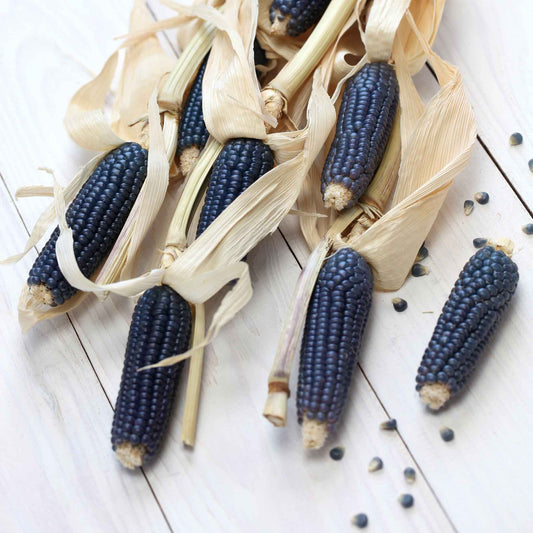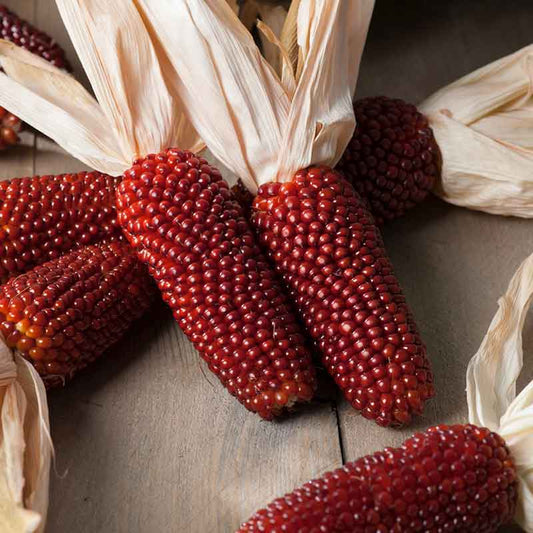-
main-collection-product-grid

Corn Seeds (Organic) - Blue Hopi
Make your own organic blue corn tortillas and chipsCorn Seeds (Organic) - Blue Hopi
Make your own organic blue corn tortillas and chipsRegular price $22.99Regular priceUnit price per -
main-collection-product-grid

Corn Seeds (Organic) - Strawberry Popcorn
Ruby red kernels bring interest and magic to your gardenCorn Seeds (Organic) - Strawberry Popcorn
Ruby red kernels bring interest and magic to your gardenRegular price $22.99Regular priceUnit price per
All about our organic corn seeds
- Thrives in bright, sunny growing areas
- Rich in vitamin C and other healthy nutrients
- America's number one field crop
- Versatile warm-season crop
Have a taste of the best organic corn
Corn has been farmed in North America for thousands of years and is as American as apple pie. This famous seed, together with tomatoes, has inspired more home gardens than any other crop. One bite into a fresh ear of organic corn will explain all of your questions concerning the popularity of this indigenous food.
What to know about planting organic corn
Organic corn must be grown from seed throughout a frost-free growing season. It is pollinated by the wind, thus it must be planted in a block of multiple rows, not just one skinny row, to ensure even pollination. Choose one cultivar (to avoid cross-pollination) and plant a minimum of 10 to 15 plants per person for an abundance of fresh corn this season.
Organic corn seeds should be planted two weeks after the final spring frost. Corn grows best in healthy, well-drained soil at a temperature of 60 to 65°F. Choose a planting location that receives lots of sunlight and has a good level of nitrogen and moisture in the soil. Prior to planting, the soil should be amended with old manure or rich compost. Plant two to three seeds per hole, about one to two inches deep. Rows should be 30 to 36 inches apart and plantings should be 12 to 15 inches apart. Shorter varieties may need to be spaced closer together.
Maintaining a healthy organic corn crop
After planting, water the soil and keep it moist until germination and harvest. Thin to the strongest plant if more than one seed develops from a bunch. When the plants are between 12 and 18 inches tall, use a nitrogen-rich fertilizer. If weeds develop around plants, pick them out; if weeds become too numerous, a thick layer of mulch can be placed at the plant's base. The plant's silk should be visible and fading to a brown tint after around three weeks. Organic corn ears are ready to be harvested when this happens.
How to store organic corn
Bend and twist the ear of corn downwards from the stalk to harvest it. For the greatest quality, eat or freeze right away. If you're preserving your organic corn, don't remove the husks; it'll keep for about a week in the fridge or up to eight months in the freezer.
For more information about planting, growing, and caring for organic corn seed, see the Corn Seeds Planting Guide.

